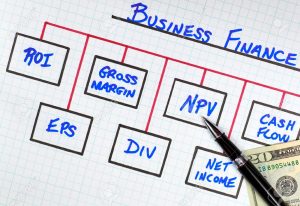You can expect to use financial concepts in your case interviews. Which concepts? That will depend on the type of consulting position for which you interview. For general consulting roles, be prepared to use revenue, fixed and variable costs and profit. If you apply to a financial services practice, you will need to know more advanced concepts including return on investment and payback periods. Of course there is an endless list of financial concepts you could learn BUT you may not have time to master all of them before your interview.
In a June 2016 I Got an Offer blog post, the author gives three reasons why the five financial concepts listed above are sufficient for a case interview:
- These concepts will enable you to tackle 99% of the cases you come across in your interviews.
- Mastering additional concepts would be very time consuming. Your time may be better spent practicing on real case interviews.
- Most consultants are not expected to be well-versed in financial concepts beyond those listed.
The article defines the financial concepts and provides formulas for each.

REVENUE: “Revenue, sales, or turnover (the three terms are synonymous) are the total amount of money that the company receives from customers by selling its products or services. You can obtain revenues using the following formulas: Revenue=Volume X Average Price or Revenue=Total Market Sales X Market Share.”
COSTS: “Costs (or expenses) are the total amount of money that the company pays to its various suppliers. Businesses incur two types of costs. Variable costs are the costs that increase with higher sales or higher production. Fixed costs are the costs that would have be paid regardless of how much is produced. In other words, variable costs change with the level of business activity, while fixed costs do not.”
PROFITS: “The most important relationship in business analysis is probably “Profits= Revenues – Costs.” Profits, also known as net income or net earnings, represent the money left to the owners or managers of the business after all expenses have been paid. Many case interview questions revolve around whether or not a company is profitable and what it should do to become more profitable. (There are two ways companies can increase profits: increase revenues or decrease costs.)”
RETURN ON INVESTMENT: “Return on Investment (ROI)” or “return on capital invested (ROCI)” measures how much profits are generated by $$ invested in a given project or business. The formula for ROI is: Return on Investment = Profits over a given period / Initial investment. ROI is expressed in percentage and calculated over a given period of time (usually one year). There are two ways to increase ROIs: growing profits or decreasing the initial investment.”
PAYBACK PERIOD: “Payback period measures how much time it takes to earn back your initial investment. The formula is Payback Period = Initial investment / Profits over a given period. Payback periods are usually expressed in years by dividing the initial investment by the profits per year. (but can also be calculated per day or per month).”
More details plus examples are provided in this I Got an Offer blog post. The post also links to a brief YouTube video presentation explaining each of the financial concepts discussed. Check out both for maximum benefit!
